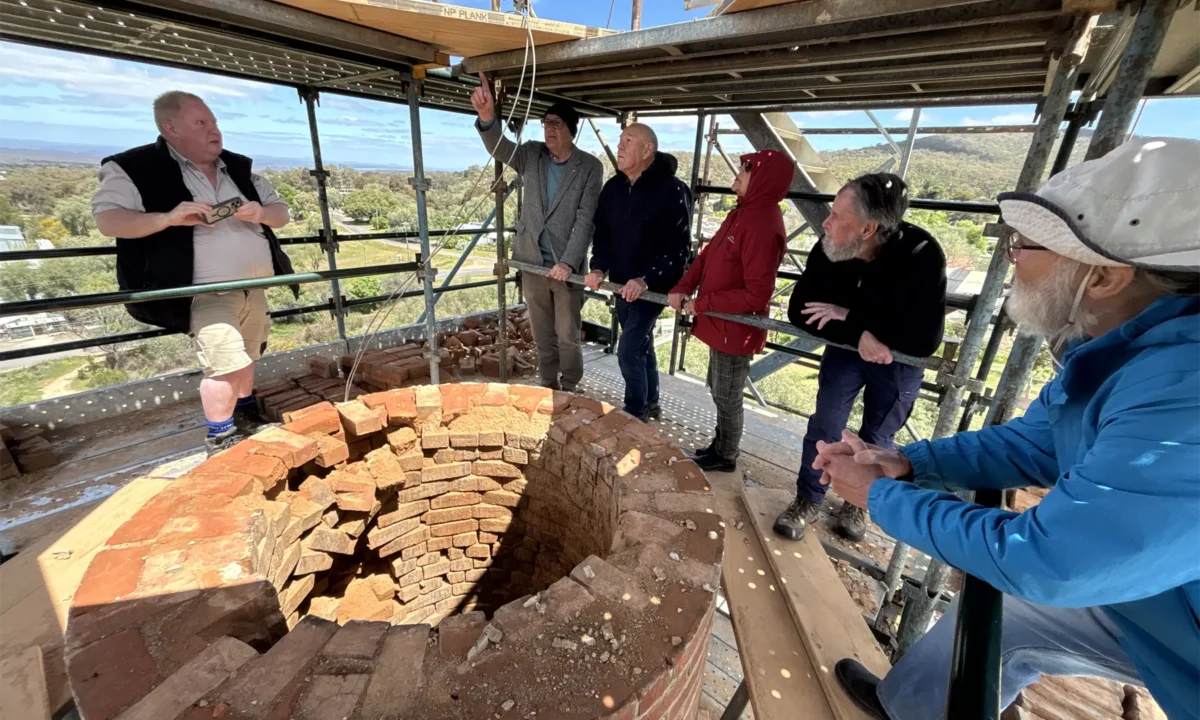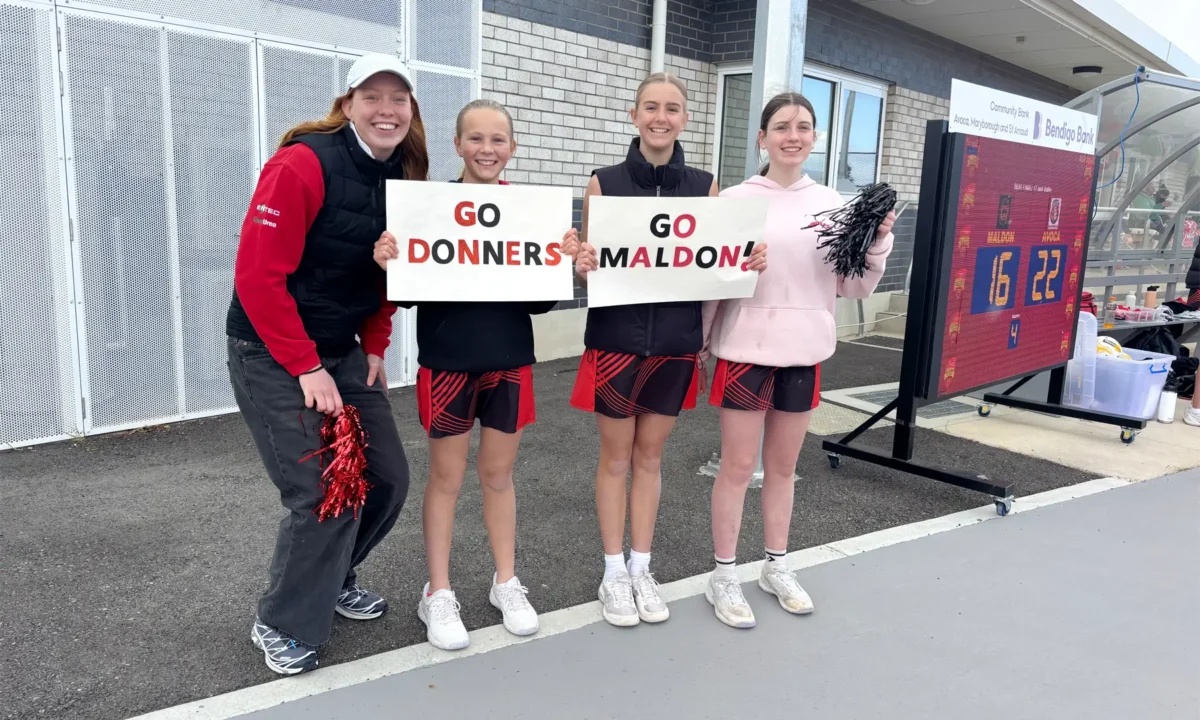Manager Doug Baird in Australia’s smallest pub. As excitement grows for the opening of Maldon’s Porcupine Village tourist attraction, the managers are looking forward to sharing the results of their hard work and they have surprises in store for future visitors. Managers Doug and Deb Baird have been toiling for four years developing, renovating and…
Related Posts

Beehive Chimney: inside info
Builder Simon Davies explains the works to local stakeholders at the top of Maldon’s Beehive Chimney. A small number of local stakeholders were invited by Parks Victoria to climb the scaffolding around Maldon’s Beehive Chimney and inspect the remedial works project on Monday 27 October. It was terrifying and informative, but some members of the…
To access this post, you must purchase a Subscription.
Keep up with the locals!

Cheer we go!
Claire, Martha, Elsa and Myra cheering for Maldon Netball Players in the semi-finals at Carisbrook last week. Friends and fans of Maldon Netball gathered to support and encourage the players in the semi-finals at Carisbrook Recreation Reserve. There was a huge turnout for semi-finals games at Carisbrook Recreation Reserve on Saturday 30 September, with family…
To access this post, you must purchase a Subscription.
Keep up with the locals!

Heron Nugget monument unveiled at Golden Gully
Interested onlookers at the unveiling to hear the great history talk about the discovery of this significant nugget by geologist and researcher Clive Willman. The Heron Nugget monument. Photos courtesy Julie Hough. A new monument marking the site of the famed Heron Nugget discovery was unveiled at Golden Gully, Fryerstown, last Friday. The project was…
To access this post, you must purchase a Subscription.
Keep up with the locals!

